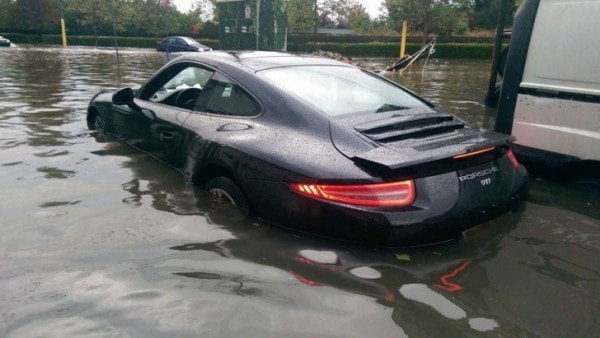
While the usual fuel-air mixture is compressible, allowing the piston to perform its reciprocation movement inside the cylinder, liquids are extremely difficult to compress, which means the affected piston(s) will come to a stop on the upstroke.What can cause hydrolocking
Before we start talking about this unpleasant issue, we have to explain that water reaching the intake of your engine is not the only hydrolock cause. Alas, this can also occur due to engine coolant entering the combustion chamber (a blown head gasket causes this). Malfunctioning injectors or carburetors can also allow liquid fuel to enter the cylinder.The Damage, in painful details
The effects hydrostatic locking can have on your powerplant depend on the state of the engine at the time the water enters the combustion chamber. If an unit hydrolocks when idling, it will normally stop and will not allow you top bring it back to life using just the starter motor. This is happiest case, where you might not experience any damage at all.
Unfortunately, if an engine hydrolocks when being revved, the consequences can be dire. Depending on the height level of your intake and the depth of the water, as well as on the various on-site parameters, the amount of liquid that enters the engine can reach one or more cylinders.
You can experience a case where a single piston hydrolocks, while the others provide enough power to keep the engine running for a while. However, when hydrostatic locking occurs at speed, the unit will usually come to an abrupt stop.
Generally, when an engine hydrolocks at speed, the force of the camshaft pushing bends the piston rods, which are folded under the piston above them. While the crankcase or the heads can be ruined in the process and the crankshaft bearings destroyed, the shock can even cause cracks in the engine block.The solutions
First of all, if you can’t avoid a… dive in your car, make sure you shut down the engine before the water has any chance of reaching the air intake. If this has already happened and the engine has stopped, do not try to restart it.
Actually, using the starter motor in the aim of bringing the engine back to life is the most common way to solve the problem (if no damage has occurred), but only after the combustion chamber has been given an orifice to eliminate the water through – this can be done by removing the spark plugs or the injectors.
You’ll notice the water being thrown out of the cylinders and the engine should start as normal afterwards. At a certain point, you can see a strange gas coming out of the exhaust, which is the result of the unusual mixture that was burned in the cylinders, but this problem should go away briefly.
Serious situations such as the ones described above (read: when the unit has been damaged) generally lead to problems so profound the engine needs to be replaced altogether, as trying to rebuild it after multiple major components have failed would only result in even greater costs.
This may sound as too much for certain drivers, but you should treat your engine as if it was your dog. Do so and it will reward you with the exact specs the manufacturer listed for years and years of your life.








